Stephanie Hafferty offers some money-saving ideas to keep seedlings warm and make sure they have adequate light.
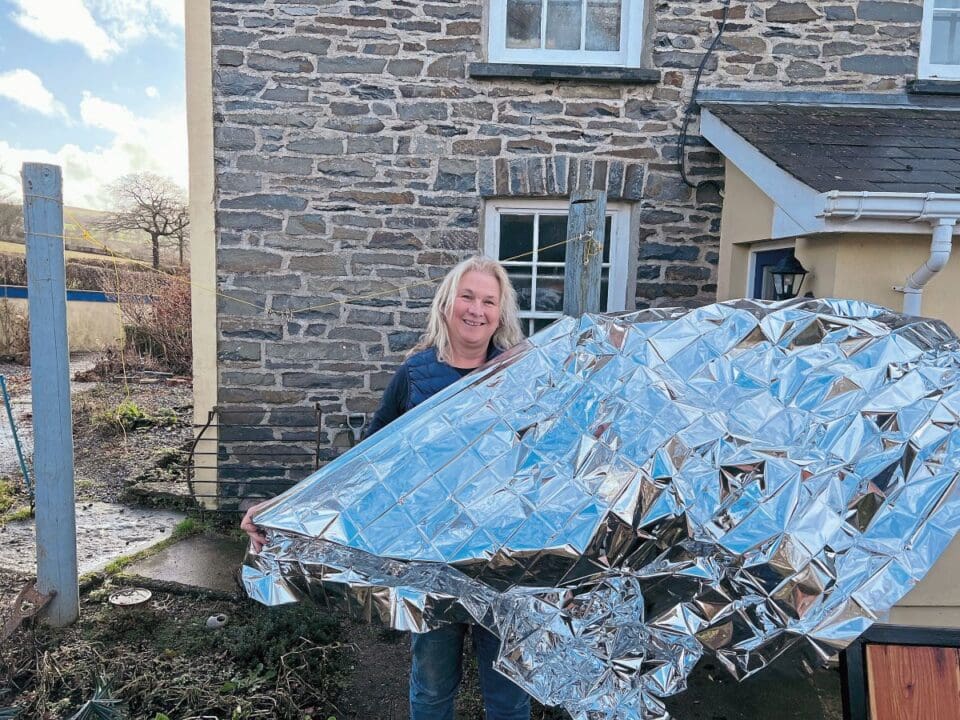
Seeds need warmth and light in order to germinate and thrive. British weather is remarkably changeable in the spring. One day we can be gardening in shorts and a T-shirt, the next huddling indoors with a mug of soup, watching hail sprinkling the garden with a layer of ice. For much of the UK, the last frost dates are well into May, which can make sowing and growing from seed a challenge.
Fortunately, there are plenty of thrifty ways to make your own propagating equipment, mostly using household items, so that your seedlings thrive.
How to make your own reflector
Whether you’re growing in a greenhouse or on a windowsill, a home-made reflector can significantly increase light and encourage healthy growth. These make the most of daylight, reflecting natural light around the plants, especially useful on windowsills where much of the light is only coming in one direction.
The simplest way is to use a foil survival blanket. Lightweight and remarkably strong for something so thin, they cost around £1 each and can last for years. Hang them from the curtain rail at windows using laundry pegs, or drape around shelving units to create an instant ‘grow tent’.
For a sturdier reflector, cover card with kitchen foil. This offers many design options, from a simple piece of card and foil folded to slot behind the plants, to a foil lined ‘grow box’. The grow box reflects light from the sides, base and, if you wish, from above too.
Make a grow box
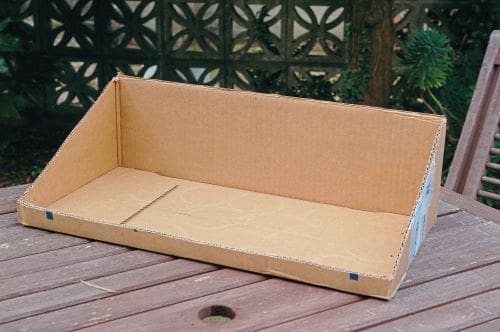
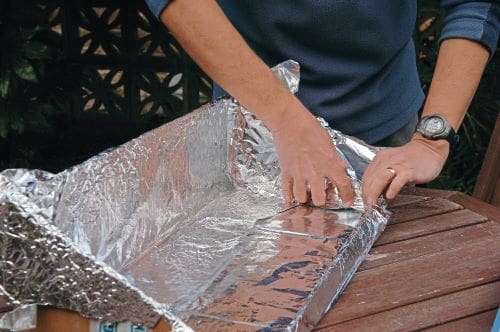
1: Firstly, measure and cut your cardboard box or card to suit the space and size of the plants.
2: After cutting the box diagonally to your desired shape, either fold the foil around the box to secure it or use glue to fix. Many glues these days are based on natural starches (check the label), which means that when you eventually need to ‘retire’ the reflectors, the card can be composted.
The back of my greenhouse is really dark. It is set into a corner of the garden with brick walls around two sides and a large silver birch shading from above (I didn’t put it there!) so I find these reflectors incredibly useful. They last for ages and when they are no longer usable, both foil and card are recyclable.
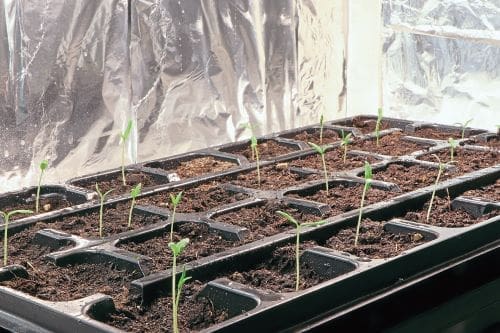
Alternative grow lights
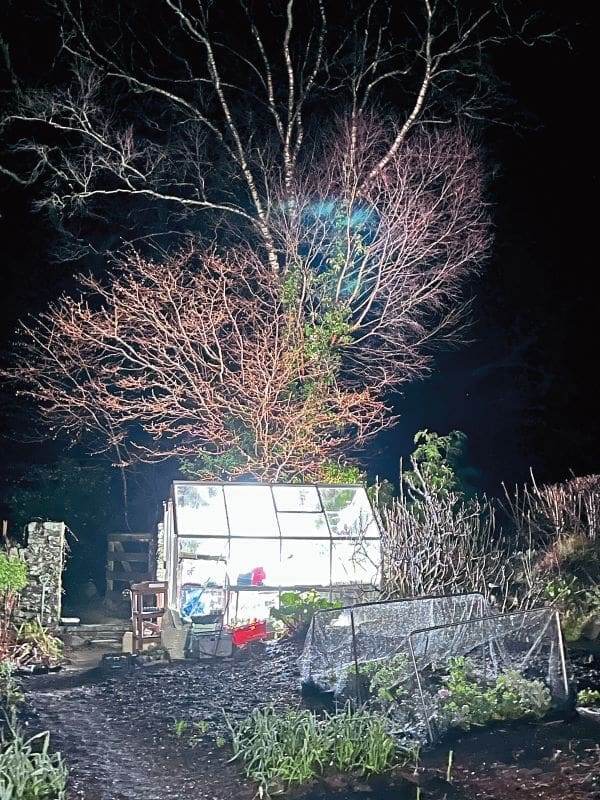
Spring is a variable season, you can never be sure whether it will be bright and sunny or grey and dismal. As plants need light, grow lights can help to increase the strength and duration of light, which is especially useful for light-loving plants such as aubergines and chillies. Specialist horticultural grow lights are marvellous but for the frugal gardener here are some other options.
A clip-on lamp with an LED bulb makes an effective alternative grow light, but of course it does require electricity. Safety first: Always make sure that lamps or other electrical appliances are used safely, use a trip, and make sure that they won’t get wet. Water and electricity are not a good combination.
Solar-powered outdoor lights are less powerful, but they can help to increase ‘daylight hours’ for plants. I string up solar fairy lights in the greenhouse, which glow charmingly during the evening. It can look a bit like the aliens are landing in the garden at night!
Top tip: Buy in more demanding plants
While growing from seed is usually cheaper, often it can make more practical sense to buy plants such as chillies or aubergines, which require a lot of light and warmth, as transplants in late April or May, when temperatures and day length make nurturing them much simpler. There is a wide choice of varieties these days, and it is absolutely fine to buy in some transplants if that is what works best for you. You don’t need to grow everything from seed yourself to be a great gardener.
Or, get together with other local gardeners and each choose a more heat and light intensive variety to grow. Later in the spring, share the young plants, so that each of you has a good selection of aubergines, chillies or sweet peppers to grow on.
Many seeds need warmth in order to germinate and tender seedlings which are not frost hardy can need warmth for many weeks. I love to grow aubergines, and keeping these heat-loving plants warm for months can be a full-time job. In order not to run up a huge electricity bill, I get inventive in the greenhouse with off-grid warmth.
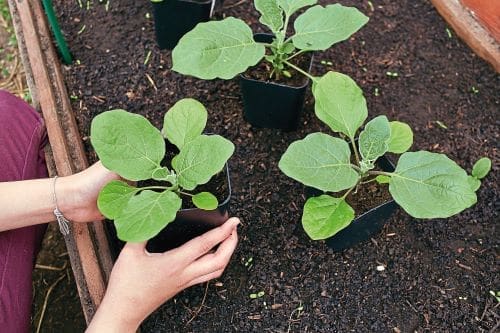
Make an off-grid heated propagator
Equipment: Hot water bottle, or plastic milk bottles (or similar – needs to be able to cope with hot water) bubble wrap or towels or old jumpers, a waterproof box (a plastic mushroom crate given away for free at the greengrocer is ideal)

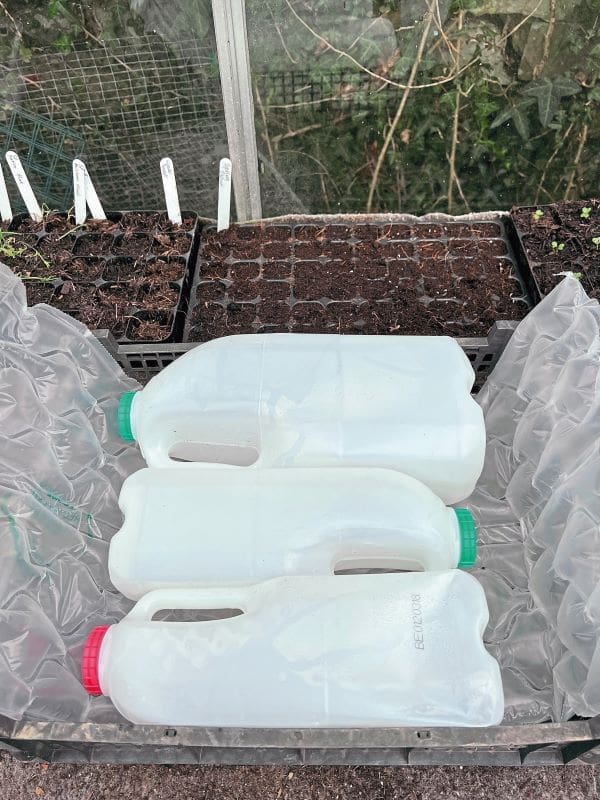
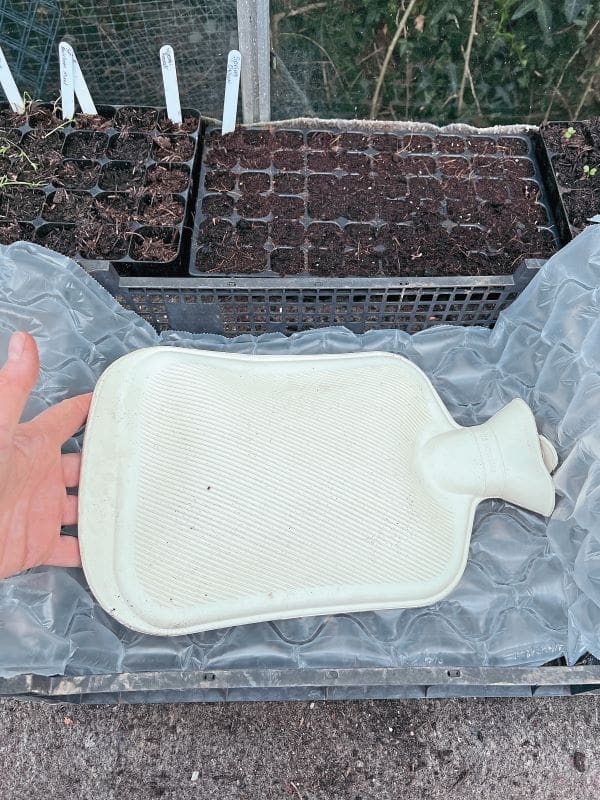
1: Line the box with a layer of bubble wrap or other insulation. I save all of the bubble wrap that comes as packaging because it has so many potential uses. Old towels or jumpers work well too.
2: Carefully fill the bottles with hot water, and place in the crate.
3: An alternative to milk bottles is using a hot water bottle.
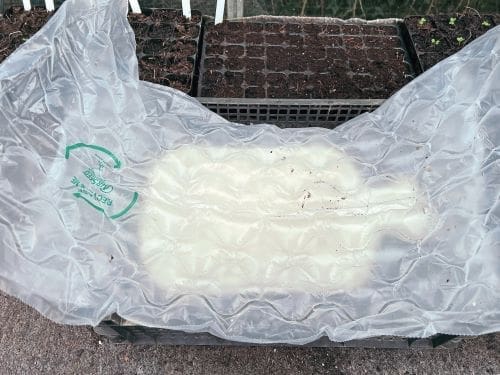


4: When bottles or hot water bottle are in place, cover with some bubble plastic to help reduce heat loss.
5: Place the trays and pots on top. Pop your home-made cloches on top. I use plastic tubs or another layer of bubble wrap to make a grow tent.
6: Lightly cover the seed trays with more bubble wrap or polythene but remove once seedlings germinate.
This should keep the plants warm all night. If it is incredibly cold however you may want to bring your seedlings indoors.
YouTube: Stephanie Hafferty Homesteading
Instagram: @StephanieHafferty
Grow Your Own Courses & Blog: www.NoDigHome.com





